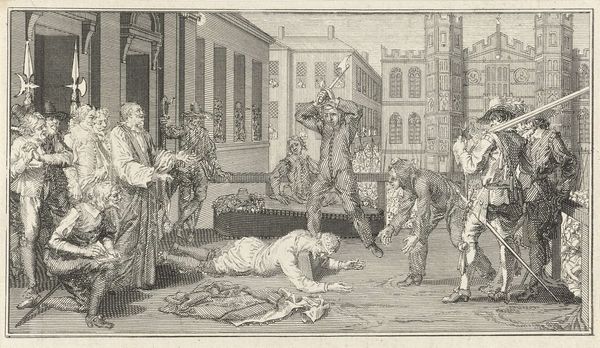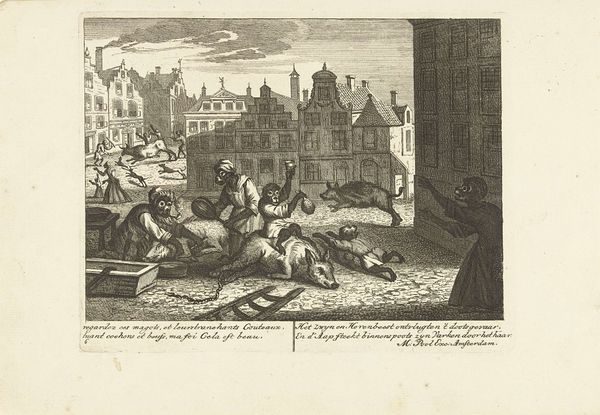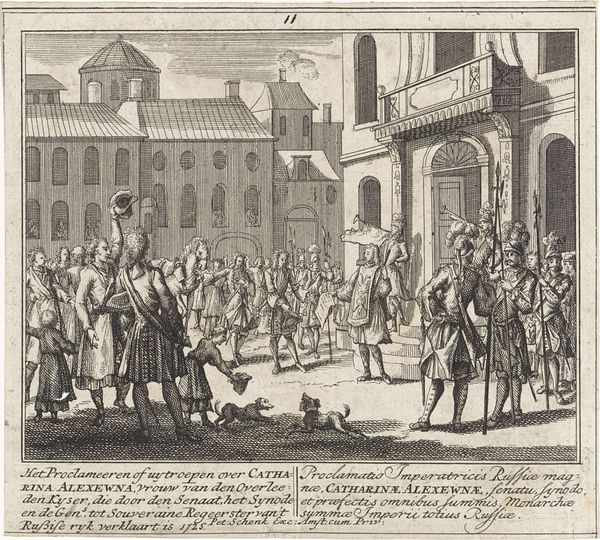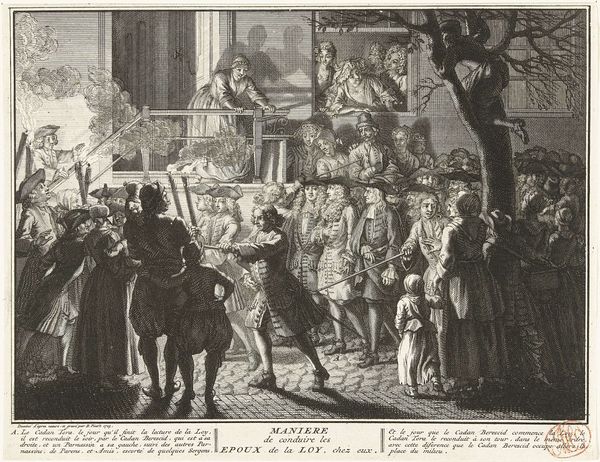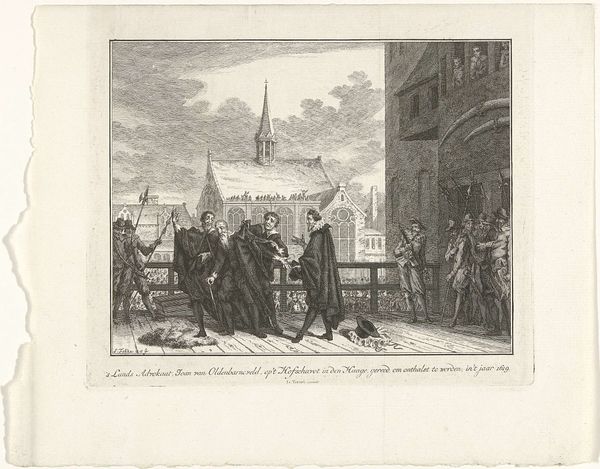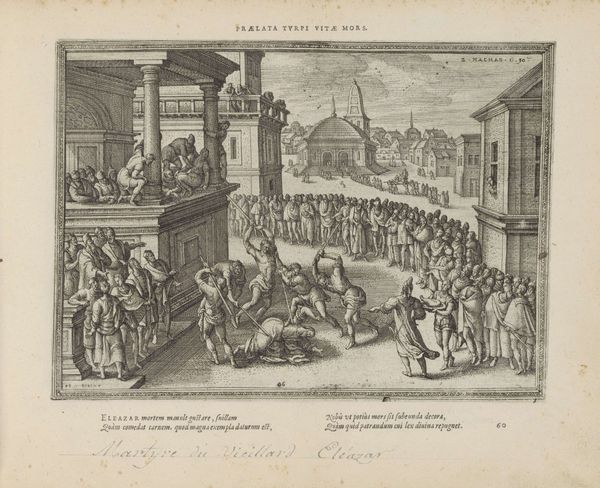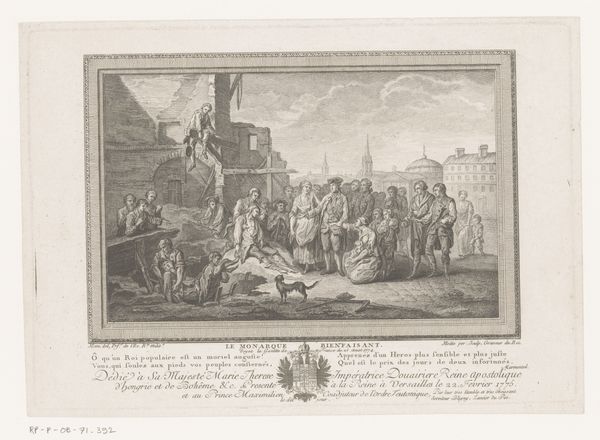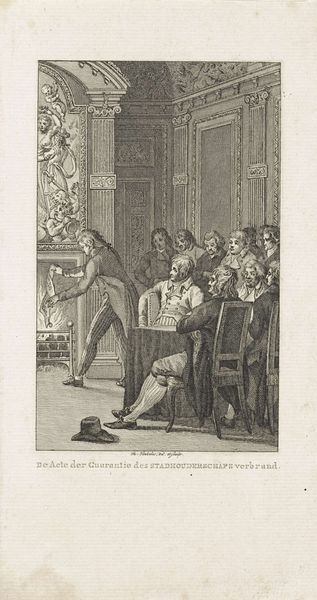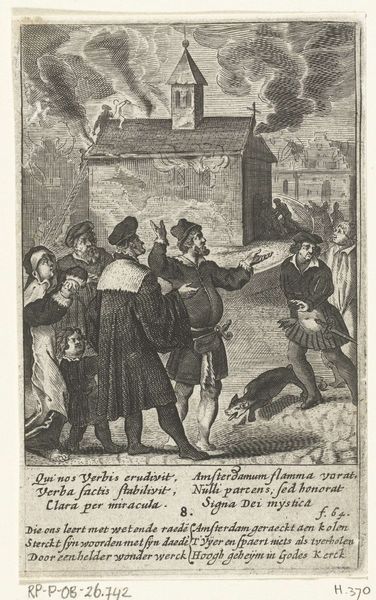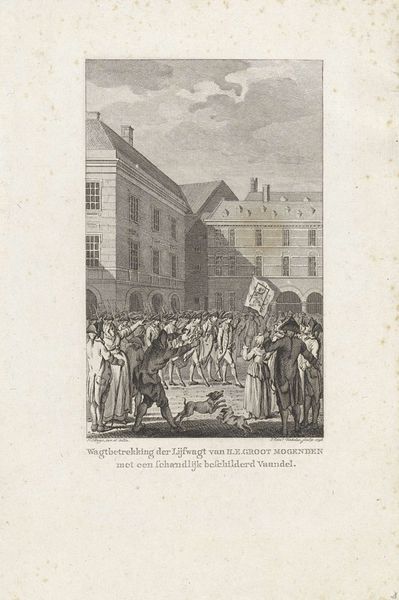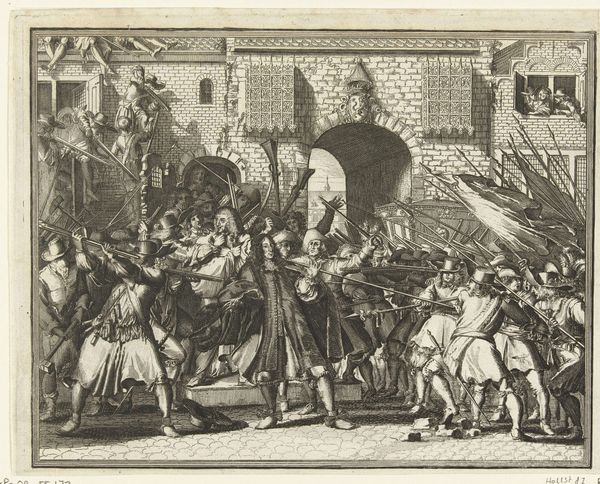
engraving
#
portrait
#
baroque
#
old engraving style
#
figuration
#
line
#
history-painting
#
engraving
Dimensions: height 104 mm, width 169 mm
Copyright: Rijks Museum: Open Domain
Bernard Picart etched this image of the beheading of Charles I of England. It was made in the late 17th or early 18th century, several decades after the event itself, and the print makes us think about the social role of historical imagery. The execution of Charles I in 1649 was a pivotal moment in English history, marking the end of the monarchy and the beginning of the Commonwealth. It was a deeply controversial act, seen by some as an act of justice and by others as an act of regicide, which is the killing of a king. Picart’s print captures the drama of the event, with the king kneeling before the executioner, surrounded by soldiers and spectators. The artist paid close attention to the architecture of the scene, to the costumes, and to the expressions on the faces of the crowd. To understand this print, we need to consider the political and social context in which it was made. Researching pamphlets, ballads, and other printed materials from the period can help us understand the different perspectives on the execution of Charles I and its significance in the history of Britain. The image and its meaning are contingent on social and institutional context.
Comments
No comments
Be the first to comment and join the conversation on the ultimate creative platform.

